Gastronomy of MORELOS
Cover photo by morelos.gob.mx
Typical Food of MORELOS
Morelos, Mexico is not only known for its rich cultural heritage but also its diverse and delicious gastronomic offerings. From street food to gourmet cuisine, the state has something to offer for every palate.
One of the highlights of the Morelos culinary scene is its typical cuisine, which is an essential part of the local culture. Tourists can sample the local delicacies as they explore the region. For example, dishes such as mushrooms with cazahuate, jumiles sauce with blue tortillas, ayocote beans with dough balls, rabbit in chileajo, cecina with cream and fresh cheese, and pork spine with martajado chiles are a delight to the senses.
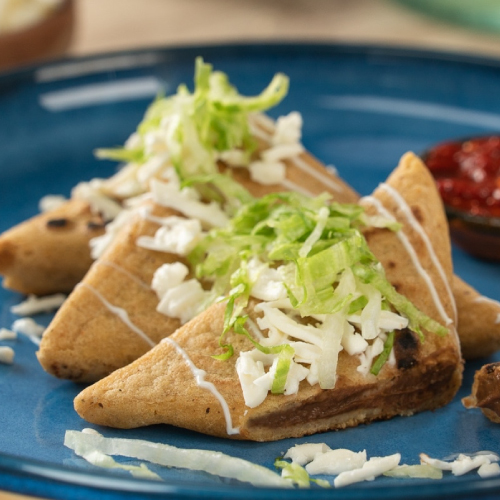
Other appetizing options include the variety of quesadillas stuffed with brains with cuitlacoche, chicken tinga, pork rinds in sauce, rajas with cheese, and tasty pambazos stuffed with chorizo with potatoes. Visitors are also encouraged to try the mole verde de pepita, the Tlayacapan-style mole, or Morelos-style mole, which will surprise you with their flavors. The pickled mourning doves and catfish tamales are also a must-try.
To complement the delicious food, tourists can also enjoy traditional drinks such as Zacualpan brandy, Huitzilac pulque, toritos, tepache, mezcal from Palpan, and eggnog from Tehuixtla. These drinks are strong but tasty, so it’s best to try them little by little to savor their flavors. For those who prefer non-alcoholic beverages, there are plenty of options available such as beetroot water or “tears of the Virgin,” cocoa water, barley water, mesquite water, balché, achocote, and uvate.
Aside from the typical dishes, Morelos is also famous for its street food, particularly the Garnacha, which is a creative alternative for preparing dough in various forms such as tacos, gorditas, quesadillas, sopes, and the famous itacates from Tepoztlán. The perfection of a steaming tummy or menudo on Sundays, as well as the barbecue of beef and goat, are also must-try dishes.
For those with a taste for gourmet cuisine, Cuernavaca offers a wide range of options for dining. Most restaurants have outdoor settings and terraces, many of them in the midst of large and lush gardens. This allows diners to enjoy the wonderful climate and a relaxed atmosphere while indulging in top-quality gastronomy.
Another dish that cannot be missed is the traditional cecina from Yecapixtla, which is considered the best in the region. And last but not least, the armored taco is a signature dish that you can only find in Morelos. It is made up of two handmade tortillas with tomato rice, potatoes, nopales, and the stew of your choice, with a delicious sauce of molcajete.
Morelos is a world full of gastronomic delights and unknown traditions waiting to be discovered. Exploring the local cuisine is an experience that should not be missed. From the typical dishes to street food and gourmet cuisine, there’s something for everyone to enjoy in this wonderful state.
Typical Dishes of MORELOS
Cecina de Yecapixtla (Yecapixtla jerky)
This is a beef dish that is chopped into strips and “cured” by drying it with salt in the open air. This is a pre-Hispanic conservation method that is still used today and is a part of the state’s tradition. The Yecapixtla municipality is where almost all the jerky in Mexico is produced, and then it is transported throughout the region and the country for anyone to acquire.
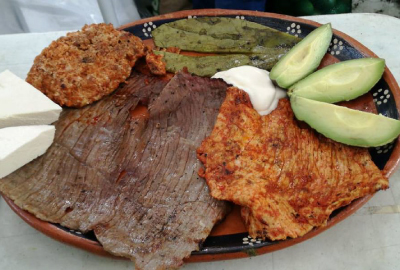
It is made by hand and has a unique flavor to which it owes its fame. The meat is separated into wide and long strips, which are left to dry after applying fine salt. Then they are prepared roasted on the comal, and tacos are made to which avocado, beans, cream and sauce are also added. These strips can also be accompanied by nopales, radishes, and a delicious spicy sauce that only Mexicans know how to do so well.
In other regions, they are usually accompanied with chilaquiles, huaraches, or sopes, which takes the flavor to another level. Yecapixtla is the world capital of cecina, and there are two versions of this dish: salty and enchilada. The salty version is delicious on its own, but the enchilada version adds a spicy kick that is sure to please those who love bold flavors.
If you ever visit Morelos, you must try this dish, preferably in a country taco accompanied by sausage, nopales, and salsa.
White Pozole
White Pozole is made with cacahuazintle corn and pig’s head. Its preparation is relatively easy, and it is a favorite in the state to celebrate birthdays, baptisms, or any party. It is not known for sure if it originated in Morelos, but it is a regional food that has been shown to enhance the flavor of corn.
To prepare White Pozole, the corn and pig’s head are cooked in a pot with spices typical of the region until the meat is tender and the corn has burst open. It is then served with chopped lettuce, radishes, onion, lime, and chili pepper. The classic way is prepared with pork, but you can also do it with beef or chicken.
In Morelos, it is said that in colonial times, it was not only accompanied with animal meat, but also with human pieces, specifically with thighs. However, you no longer have to worry about that, because it has been left behind, and now it is a main dish that you can enjoy in many places.
Fish tamales
They may not be as well-known as other tamales, but they are a beloved dish in Morelos. This classic Morelense tamale from Coatetelco and Tequesquitengo is made with fish, specifically mojarra, which is caught in the state’s lagoon. The word “tamal” means “wrapped” in Nahuatl, and the fish tamales are made by wrapping the seasoned mojarra in corn leaves, giving it a smoky flavor.
For many Catholic families, it is a tradition to eat fish tamales on Good Friday to commemorate the death of Jesus. When unwrapped, they are usually served with nixtamalized tortillas and accompanied by a simple salad, creating a unique and exquisite mix of flavors. You can find fish tamales in the markets of towns like Amacuzac, Yautepec, and Temixco, as well as in Guerrero’s gastronomy.
Huauzontles
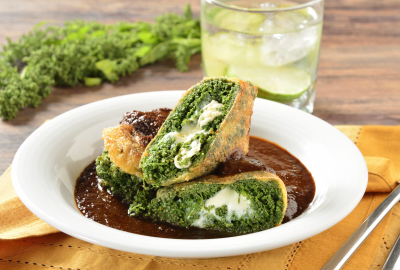
Huauzontle is a nutritious plant that has been consumed in Mexico since pre-Hispanic times. Along with corn, beans, and chia, it was one of the most important crops in the country. In Morelos, it remains a staple in daily cuisine, prepared capeado or stuffed with cheese and bathed in a delicious caldillo or tomato juice. It is not only versatile but also highly nutritious, as it contains antioxidants, iron, calcium, phosphorus, and vitamins A and B.
If you want to learn more about the history and uses of huauzontle, you can ask a restaurant owner or vendor in Morelos. Throughout the country, there are many dishes made with this plant, such as huauzontle beef steak, huauzontle supremas, and even salads. Parents in Morelos make sure to include huauzontle in their children’s diets for its numerous benefits.
Mushroom Broth
Soups are a staple food in Latin America, and Mexico is no exception. One of the most popular soups in Morelos is mushroom broth. This soup has been a favorite for many years and is said to have been prepared by the Aztecs using epazote and different types of mushrooms. Nowadays, cazahuate mushrooms are the most commonly used in this dish due to their abundance in the Mexican forests.
Mushroom broth is not only delicious, but it is also packed with nutrients. It contains vitamins B, C, and E, as well as potassium, calcium, iron, and zinc. To prepare this soup, you will need onion, garlic, citrons, mushrooms, and chicken broth with epazote and coriander. Saute the onion and garlic in a pot, then add the mushrooms and chicken broth. Let it boil for about 20 minutes over low heat. Finally, serve it hot and enjoy the rich flavor and nutrients.
Tlacoyos
One of the most beloved pre-Hispanic dishes of Morelos is the tlacoyo, which has been a staple in peasant towns since its discovery by the indigenous people. Today, it continues to be a popular dish in Mexican cuisine. This thick, oval-shaped tortilla is made with corn or corn masa and cooked on a “comal” or clay pan.
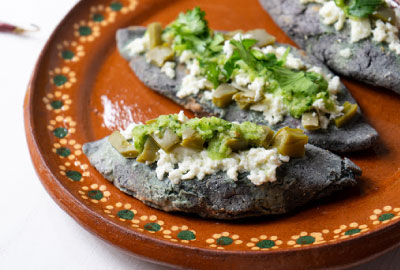
It is then filled with various ingredients, such as beans, broad beans, and cooked potatoes, and topped with cheese, chili sauce, and onion. In some places, the tlacoyo is garnished with “cured” jalapeños, which are dried with salt. In Morelos, tlacoyos are typically filled with broad beans, Chinese beans, black beans, cottage cheese or shawls, which is the seat of the chicharrón, and cooked on a clay griddle with lime instead of fat.
They are often consumed for breakfast, and you can find them in any restaurant or purchase them from street vendors. While the oblique shape of the tlacoyo is preserved in some municipalities like Zacualpan de Amilpas and Puebla, the tlacoyo is consumed differently in large cities.
Lamb and “Cabrito” Barbecue
The preparation methods of Morelos’ cuisine are very original, and this is evident in the barbecue, which is one of the main dishes of the state. To make it, the meat of the goat and “cabrito” is placed in an earthen oven for several hours, together with maguey leaves and wood to give it a soft and juicy texture.
The process that the meat undergoes before being placed in the oven is quite intense. After killing the animals, they are left hanging for several hours to bake. This helps the meat resist cooking and not cook with annoying lumps. Afterward, the meat is marinated with chipotle, guajillo, onion, and other spices.
This main course is usually served at lunch and has a unique taste that is unlike anything you’ve ever had before. You can accompany the barbecue with rice, vegetables, or taquitos in consommé, which is the same juice in which the meat was prepared. The succulent and flavorful barbecue is a testament to the originality and creativity of Morelos’ cuisine.
Tacos Acorazados (“Armored” Tacos)
These are a beloved traditional dish that originated during the Mexican Revolution. The name comes from the double tortilla that serves as a protective “armor” for the filling, while the other tortilla serves as the “ship.”
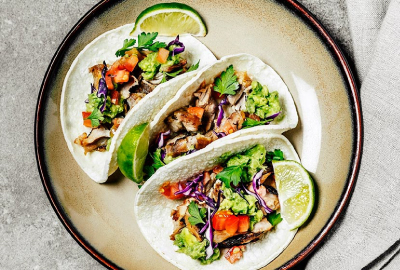
The original recipe consisted of only two tortillas filled with rice and a hard-boiled egg, but today there are various fillings such as chilies, sausages, and more. To make Armored Tacos, a layer of rice and other fillings are placed on a tortilla, and then another tortilla is placed on top to create a sandwich-like taco.
These tasty tacos can be found at street vendor stalls in Cuautla, where they were first invented by Mrs. Felícitas Sánchez during the Revolution. Armored Tacos are also prepared on the Day of the Holy Cross and the Day of the Mason.
Itacates
Itacates are one of the original dishes of Morelos. Similar in appearance to tlacoyos, which are also made with corn dough, itacates have a distinct triangular shape and are much thicker. Unlike tlacoyos, the filling ingredients are not wrapped in the dough, but are filled once the itacates are ready.
To prepare this dish, the filling ingredients, such as chicken or beef strips and pumpkin blossom, are mixed with butter and cheese. Itacates are usually served with a stew, dressed with cream, and sprinkled with more grated cheese. They pair well with horchata or jamaica waters.
The word “itacate” comes from the Nahuatl indigenous word, meaning “food supplies to keep.” This dish dates back to the 19th century when farmers used to take them to the fields to eat after a hard day’s work.
If you want to savor the original flavor of itacates, head to the Tepoztlán market, where they are sold by locals on the street and in the market.
Pipián verde (Green pumpkin seed mole)
This is another popular dish in Morelos. This dish has a unique texture and is fragrant and delicious. It is typically served during patron saint festivities and as an offering on the Day of the Dead. However, it can be ordered at any restaurant in the state at any time of year.
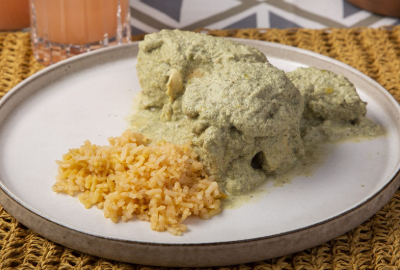
To make pipián verde, chicken is cooked with ground tomato sauce, green chili, and lettuce. Garlic, onion, cilantro, and pumpkin seeds are then added to the mixture. Pumpkin seeds have antioxidant properties, fiber, and anti-inflammatory effects that give the dish a healing touch.
Traditionally, pipián was prepared with red chili, but over time, the recipe was modified to include green chili and tomatoes, which enhance the flavor of the pumpkin seeds. The dish is typically served with salt tamales, and it is a real delicacy.
The green pipián is a type of mole that cannot be missed when trying the typical food of Morelos. This green-colored stew is made with chilies, herbs, seeds, and toasted sesame seeds. Originally, it was prepared with turkey, but nowadays, it is more commonly made with chicken. Alternatively, the green pipián enchiladas are another must-try dish.
Green mole
Green mole is a ritual meal that is often consumed during the country’s patron saint festivities. It is made with green chili, toasted and ground pumpkin seeds, epazote, and chicken. The dish gets its name from the green chili that gives it its vibrant color. The indigenous people were the precursors of this dish, and they shared their wisdom with the Spanish nuns.
The nuns then passed down the recipe, and it has survived to the present day. In Mexico, there are more than 50 types of moles, each with different colors, flavors, and textures, but the green mole from Morelos is a particular favorite.
The preparation of green mole is relatively simple, but it requires a lot of time and patience. The chili peppers are first toasted and then ground to create a paste. This paste is then mixed with toasted and ground pumpkin seeds, epazote, and other spices.
The chicken is then added to the mixture and simmered until it is fully cooked. The dish is typically served with a combination of pork and beef, accompanied by a rich white rice.
Grasshopper Tacos with Garlic
It may sound unusual to some, but they are a delicacy in Morelos. Grasshoppers are abundant in Mexico and have been consumed for centuries due to their high protein content and nutritional value. In Morelos, specifically in Tepoztlán, the famous taquitos of grasshoppers with garlic are a must-try.
To prepare Grasshopper Tacos with Garlic, the grasshoppers are sautéed in olive oil with guajillo chilies and garlic. The seasoned grasshoppers are then placed on two tortillas and topped with guacamole for a perfectly balanced combination of sour and salty flavors. While some may consider eating insects unappetizing, grasshoppers are actually considered a gourmet recipe and can be found in high-end restaurants at a premium price.
Ayocotes Beans in Adobo
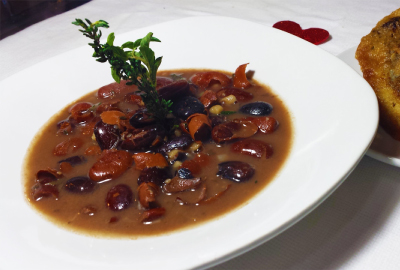
Beans are a staple food in Mexican cuisine, and in Morelos, the ayocotes beans are the most prized. These beans are larger and purple in color, and they are typically served in adobo or with red mole. Ayocotes beans in adobo is a dish that is sure to tantalize your taste buds.
To prepare ayocotes beans in adobo, you will need onion, chili, garlic, oil or lard, meat, and of course, ayocotes beans. Start by sauteing the onion, chili, and garlic in oil or lard. Then blend them with water to create a sauce. Cook the meat until it browns, and then add the sauce. Let it boil for a few minutes before adding the ayocotes beans. Boil until the beans reach the desired texture, and then serve them with pork rinds and cheese.
Esquites
Esquites are a popular street food in Mexico, made by boiling or frying corn kernels with salt, lemon, and chili, and served with mayonnaise, cheese, and cream. The name comes from the Nahuatl word for “to toast,” referring to corn. In Morelos, they are properly called esquites, and their version is healthier since it has almost no fat.
Esquites are so popular in Morelos that they even have their own religious festival called Xarikixa or Fiesta del Esquite. You can easily find them at street stalls in public squares and fairs at a very affordable price.
Typical Drinks of MORELOS
Toritos (“Little bulls”)
Toritos are a popular drink in Morelos. This drink is made with tequila or cane brandy and is mixed with orange juice, onion, and chili peppers in vinegar. While it may sound like a strong drink, it is actually very refreshing and has to be tried before judging. There are two versions of this drink, the first being the “torito boqueño” which is prepared in Veracruz and is made with cane brandy, fruits of the season, evaporated milk, and sweetener.
The other version is the one from Morelos, which has orange, onion, and chili peppers. The recipe for this drink originated from field workers who mixed fruit with cane brandy to gain the strength of a bull after a hard day’s work. This drink became popular among the workers and eventually extended its popularity to become one of the best regional drinks of Morelos.
Pulque from Huitzilac
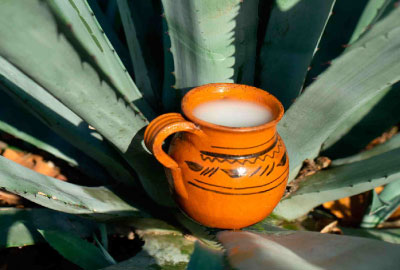
Pulque is another traditional drink that originated from Huitzilac. It is considered a blessed drink because in pre-Hispanic times, it was believed that it was only ingested by the gods. Pulque is made from the fermentation of mead, which is made from maguey nectar. Although it was related to the lower class, it has gained immense acceptance among the population and is now sold in small businesses, high-class bars, and restaurants.
Its flavor is longed for by many, and it is known to contain prebiotics, which makes it good for the digestive system. Pulque has become one of the attractions of Morelos and is a must-try for anyone visiting the state.
Tepache
Tepache is a refreshing drink that is perfect for those hot summer days. It is made in the traditional way with the fermentation of pineapple, but it has a low degree of alcohol. This is why it is often seen being offered by street vendors in avenues, squares, or parks. It is a drink that is popular among the locals and is a great way to quench your thirst on a hot day.
Aguamiel (Mead)
Aguamiel is a beverage that has been enjoyed in Mexico since pre-Hispanic times. Also known as sirope, tlachique, or jarabe, this drink is made by extracting the sap from the maguey plant. It is said that the Aztecs were the ones who started and perfected the process of making aguamiel, and the recipe has been passed down through generations ever since.
Today, anyone who visits or lives in Morelos can enjoy this refreshing beverage. To extract the sap, the leaves of the maguey plant are scraped for half an hour to obtain the juice, which takes another five hours to collect.
Despite the labor-intensive process, the resulting aguamiel is worth the effort as it has several health benefits, including lowering cholesterol, aiding digestion, and cleansing the kidneys. The aguamiel consumed in Hidalgo, Zacatecas, and San Luis Potosí often includes chili as an additional ingredient and is sold by vendors on the streets.
Atole de aguamiel (“Aguamiel” atole)
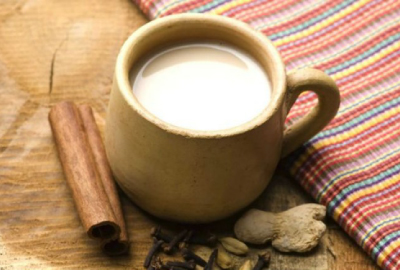
It is a famous drink that combines two of the best Mexican recipes into one. It has become popular because it is not only nutritious but also sweet and one of the few traditional drinks of Morelos without alcohol. The traditional method of preparing this drink involves using clay pots for cooking and serving to preserve the flavor until the very end.
However, there are many regional variations of this drink, such as in Guerrero, where it is made with whole or ground kernels of young corn, and in Querétaro, where it is prepared by adding aguamiel to atole de puzcua. In Morelos, the preparation is straightforward: heat the aguamiel and add corn dough while stirring to avoid sticking or burning.
Once it has cooled down, it can be consumed using a “puscua,” which is boiled maize mixed with aguamiel. The mixture is boiled until it reaches the thick consistency that characterizes Mexican atole.
Mezcal from Palpan
Palpan is a small town in Morelos that is renowned for its artisanal mezcal production. Despite having only 800 inhabitants, the town has made a name for itself in Mexico for its exceptional mezcal brands. Palpan’s main economic activities revolve around agriculture and livestock farming, with mezcal production being a significant contributor.
Mezcal is made from the maguey plant, similar to aguamiel, but the process is more complex and involves roasting the plant’s heart before fermentation. The resulting beverage has a distinct smoky flavor and is often enjoyed as a shot accompanied by slices of orange and worm salt.
Mezcal from Temixco
Temixco, the fourth-largest city in Morelos, has its own artisanal mezcal that is well worth trying. In fact, the municipality has its “mezcal route” where visitors can learn about its production and try different artisanal brands. Mezcal is a type of alcoholic beverage that is made from the agave plant.
It has a distinct smoky flavor and is often compared to tequila, another popular drink in Mexico. The production of mezcal is an art that has been passed down through generations, and the people of Temixco take great pride in their craftsmanship.
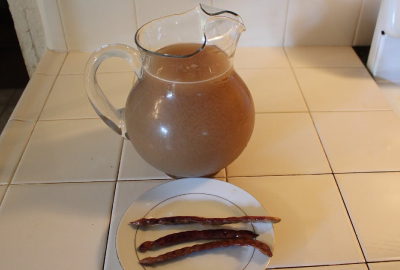
Mesquite Water
Mesquite water is another drink that is quintessentially Morelense. Mesquite is a tree of the leguminous family that can grow up to 15 meters tall, with thorny branches and edible flowers. However, it is the fruit of the mesquite that has made it so popular. The fruit is a spiral-shaped pod that measures about 10 to 20 centimeters and has a yellowish color.
The flavor of the fruit can be sweet if it is ripe or bitter if it is green. Mesquite water is made by cooking the tree pods and extracting the sap. The sap is then diluted with water to create a refreshing drink that is often served very cold. You can find this drink in the hands of street vendors who have perfected the traditional technique over many years.
Aguardiente from Zacualpan
Zacualpan de Amilpas is a charming town in Morelos that boasts a functional barter market that has existed since before the colonial era. This is also where the locals produce their favorite drink: aguardiente or “curadito” made with products from the region. Aguardiente is a strong alcohol that is used to make several typical alcoholic beverages in Morelos.
However, the “curaditos” are made using a pre-Hispanic recipe that has remained original to this day. To make the “curaditos,” brandy is mixed with various fruits and natural herbs from the area, with figs or mint being the most common. The result is a light and smooth texture that goes down easily.
However, these drinks can be deceptive, and you can easily drink more than you should before feeling their “calming effect.” It’s important to be careful with this drink as it has a high alcohol content.
Typical Sweets and Desserts of MORELOS
The state of Morelos has a long history of producing typical sweets using elements obtained from the countryside, which has been passed down from Mexico’s colonial past. Some of the most popular sweets produced in Morelos include alegrías, palanquetas, obleas, and jamoncillos. According to the Amaranth Product System, there are around 200 producers of wafers, 200 of alegrías and palanquetas, as well as 10 of jamoncillo in the state.

The main ingredients used in the production of these sweets and their variations are amaranth, peanuts, seeds (obtained from Creole pumpkin), walnuts, and honey. These sweets are highly nutritious, with low caloric and sugar content, and are easy to digest. Therefore, the consumption of these sweets is highly recommended.
The sweets made in Morelos are sold throughout the state, with around 25 stores owned by the producers themselves, as well as supermarkets and convenience stores. Additionally, high-volume buyers distribute these sweets to other states such as Mexico City, the State of Mexico, Puebla, Guerrero, and Querétaro.
The traditional sweets produced in Morelos are a delicious and nutritious treat that has been passed down through generations. With a wide range of flavors and ingredients, these sweets are loved by many and can be found throughout the state and beyond. So if you ever find yourself in Morelos, be sure to try some of these amazing sweets and experience the unique flavors and traditions of Mexico.
Merengues
Merengues are another delicious sweet that you can find in central parks and malls throughout Mexico. These treats, made with lots of sugar, come in different colors and consistencies. It is said that merengues were created by an Italian and arrived in Mexico with the viceregal convent cuisine. Since then, they have been adopted by Mexican families and have become a beloved and traditional sweet.
Cocadas
Cocadas are a traditional Mexican sweet made with grated coconut, sugar, and milk. This delicacy is obtained from the fruit of a type of tropical palm tree commonly known as a coconut tree. The juicy pulp of the coconut is used to extract fat, coconut oil, and a refreshing milky liquid, which are then combined with sugar and milk to create Cocadas.
Plátanos flameados (Bananas Flambé)
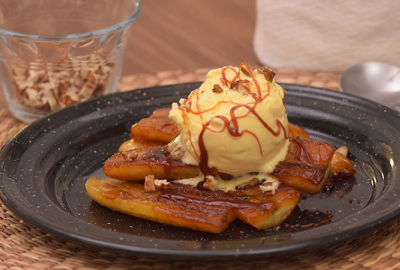
Bananas are one of the most popular fruits in Morelos and are often used to make desserts. One of the most famous banana-based desserts in Morelos is Bananas Flambé.
This dessert consists of plantains soaked in a sugar sauce with a hint of orange, flambéed with tequila, and served with vanilla ice cream. For added flavor, a small piece of coconut caramel or chopped walnut can be added. Bananas Flambé is a perfect sweet treat to enjoy after a large main course, such as the barbecue of mutton and kid.
Palanquetas
Palanquetas are a nutritious snack and an essential part of Mexican culture. This delicacy contains protein, fiber, and vegetable fat, which help regulate cholesterol levels, and vitamin E and minerals such as copper and iron that oxygenate the blood. The name Palanquetas comes from the Nahuatl word “papaquili,” which means joy.
Originally, this sweet was made from roasted and ground corn mixed with honey. Over time, the honey was replaced with sugar and the corn with seeds or nuts. The peeled peanut nougat mixed with piloncillo syrup is a popular variation of this sweet in Morelos. It is recommended to buy Palanquetas from local vendors, as their handmade preparation guarantees fresher and more natural ingredients.
Muéganos
Muéganos are a popular sweet that has become synonymous with closeness and togetherness. These sweets originated in Puebla and are made from honey with a mild anise flavor, which is then covered with a wafer. Muéganos have been in Morelos for over a century and have become an icon of the region’s gastronomy. They are a must-try for anyone visiting Morelos.
Nopal Jam
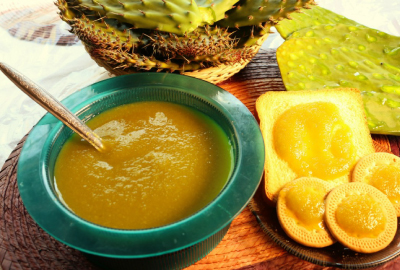
Nopal, also known as xoconostle or prickly pear, is an edible plant from the cactus family. Although it may not look very appetizing, it is a very popular ingredient in Mexico, and there are various ways to integrate it into recipes. One of the most delicious ways to enjoy nopal is in jam form. Jams are an essential part of the Morelos table, and nopal jam is one of the most nutritious and tasty jams you can try. Nopal is grown in the same region and is rich in calcium, potassium, sodium, and phosphorus.
To make nopal jam, you need to start by cleaning and chopping the nopal and then blending it dry. Once blended, mix it with sugar and bring it to a boil. Then add the leaves and the preservative to the mixture. Once it reaches the desired thickness, remove it from the heat and allow it to cool. You can then spread it on any ingredient of your preference. Nopal jam is a delicious and healthy option that you should not miss.
Ice Cream from Alpuyeca
If you have a sweet tooth, then Alpuyeca ice cream is something you must try when visiting Morelos. The artisanal ice cream from Alpuyeca is considered the best in the country and has become a popular tourist attraction in the region. The ice cream’s unique flavor comes from fresh fruits bought from the same region and its unique manufacturing process.
Alpuyeca ice cream offers an endless variety of flavors, including mamey, coconut, corn, lemon, strawberry, and passion fruit. The ice cream is made by blending the fruits with water, milk, and sugar. The mixture is then placed in a cold container and stirred for up to 40 minutes until it solidifies. Each container of ice cream requires between one to an hour and a half of preparation.
Alpuyeca ice cream is only available by hand, from street stalls manned by expert vendors who know the technique of preparing this sweet. The ice cream stands out among the drinks and desserts of Morelos for being perfect to refresh your afternoons, and with so many flavors to choose from, you are sure to find the perfect one to suit your taste.
Alegrías
Alegrías are a classic of typical Mexican sweets, and they are very easy to find throughout the country. However, they are native to the central region of Morelos and the State of Mexico. These tasty treats are made from honey and amaranth, a crop that was considered an important ceremonial element during pre-Hispanic times.
Amaranth was used in various religious ceremonies, and its consumption was associated with the gods of fertility and life. Alegrías are not only delicious but also very nutritious, making them a popular choice for a quick and healthy snack.
Tlatoquiles
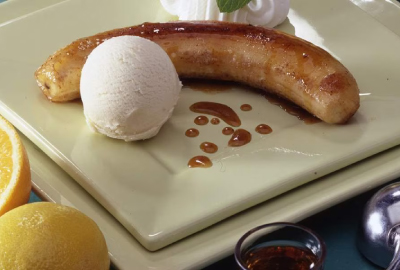
Many of the traditional desserts of Morelos are made from bananas, but there is one recipe that stands out for its use of green apple plantains: tlatoquiles. Unfortunately, this recipe has been in decline over time, and its frequency of preparation has decreased. Despite this, it is a dessert that every tourist must try to appreciate the cultural heritage of the region fully.
To make tlatoquiles, you bathe ripe green plantains with piloncillo in honey, a natural sweetener based on sugar cane and tequesquite. Then you bake the plantains until golden brown and serve them cold, accompanied by ice cream or cream. However, those with diabetes should be cautious, as tlatoquiles contain high levels of sugar.
“Ate”
Ate is a sweet delicacy that has been present on the tables of the people of Morelia since colonial times. Its main producer is the state of Michoacán, and it is made from quince pulp or other fruits, sometimes combined with cheese.
It is a popular ingredient in traditional Mexican sweets, especially during the holiday season. For example, it is often used in the traditional rosca de reyes, a sweet bread eaten on the Epiphany, which celebrates the arrival of the Three Wise Men.
More Tourist Attractions in MORELOS
Guided Tours in MORELOS
Flights & Hotels in MORELOS
More Tourist Attractions in MEXICO

Traditions in Mexico
It is practically impossible to make a meticulous, and above all, accurate selection of the places to visit in Mexico. Each place that our country houses is unique and beautiful in its own way. Mexico, with its nearly 2 million km², has a large number of scenarios to offer, as well as endless activities to do. Do not lose your way and enter the places to visit in Mexico. In Mexico, apart from the beaches and its famous archaeological sites, there are many other really interesting sites and activities that you should know. In the surroundings of the main cities you will find places full of culture and tradition, where you can spend relaxing, interesting and fun vacations. On your trip through Mexico you cannot stop obtaining souvenirs, the crafts that are made here are of the highest quality and recognized worldwide. A shopping tour cannot be missed.… Read More

Archaeological Sites
The Archaeological Zones are the cultural past of every Mexican. You will be amazed at the ambient, nature and the environment that surrounds them. Climbing to the top or being around it will take us back in time to admire every detail. México is a country of culture and traditions, many of which we have inherited from the pre-Hispanic inhabitants of this vast territory, although it is true that there were more settlements in the central and southern part of the country, it is also possible to find some archaeological remains in the north.
… Read More

Beaches
On the Beaches of Mexico you can immerse yourself in the intense blue ocean of the Pacific bays, sunbathe on the shore of the warm and transparent waves of the Caribbean Sea in Quintana Roo or even rest on the beautiful coasts of the Gulf of Mexico. Mexican beaches hide wonderful secrets for the traveler. By visiting them, in addition to enjoying the excellent climate and water activities, you can discover splendid archaeological sites and interesting colonial cities without traveling long distances.… Read More

Capital Cities
Folklore, gastronomy, literary culture, art and exhibitions, is what you will find in the capitals of the states of Mexico. To the north, colonial Mexico, Puebla, Guadalajara, Guanajuato, the Sonoran desert and the California peninsula. To the east Veracruz and the gulf. To the west Acapulco, Oaxaca and Tuxtla Gutiérrez. And to the south the Riviera Maya and the pyramids of Chichén-Itzá, Tulúm and Cobá in Yucatán, Palenque in Chiapas, the cenotes, and the Central American jungles.… Read More

Magical Towns
A Magical Town is a place with symbols and legends, towns with history that in many cases have been the scene of transcendent events for our country, they are places that show the national identity in each of its corners, with a magic that emanates from its attractions ; visiting them is an opportunity to discover the charm of Mexico. The Magical Towns Program contributes to revalue a set of populations in the country that have always been in the collective imagination of the nation and that represent fresh and varied alternatives for national and foreign visitors. A town that through time and in the face of modernity, has conserved, valued and defended its historical, cultural and natural heritage; and manifests it in various expressions through its tangible and intangible heritage. A Magical Town is a town that has unique, symbolic attributes, authentic stories, transcendent events, everyday life, which means a great opportunity for tourist use, taking into account the motivations and needs of travelers.… Read More

Gastronomy
The Gastronomy of Mexico has a great diversity of typical dishes, which is why it was recognized by UNESCO as Intangible Heritage of Humanity. The basic and representative ingredients of Mexican dishes are: corn, coriander, chili, beans, piloncillo, nopal and tomato. Mexican cuisine is also characterized by its sauces, which serve as an accompaniment to traditional dishes, prepared based on spices.… Read More

Ecotourism and Adventure
Mexico is one of the best countries for Ecotourism as it has a great variety of flora and fauna, as well as a large number of refuges for extraordinary species. You can enjoy recreational activities of appreciation and knowledge of nature through contact with it, such as: stargazing, observation of natural attractions, wildlife and bird watching. Throughout México there are more than 176 protected natural areas, 5 of them considered by UNESCO as Natural Heritage of Humanity. Just for this and much more, we believe that Mexico is a Paradise for Ecotourism.… Read More

States Of Mexico
Mexico has an incredible diversity of landscapes, where the beauty of its beaches, internationally recognized, stands out. In its vast territory of coasts, there are beaches of unparalleled beauty, and colorful landscapes. A large network of first-class hotels and tourist services is available to visitors to these beaches. Mexico is also mystical places, dotted with archaeological testimonies inherited from its original inhabitants. Monuments made by the Mayas, Aztecs and Toltecs are located in magical landscapes, like lighthouses in an ocean of natural beauty. They offer visitors buildings that tell their history, and museums that collect their cultural heritage. And that keep alive ancestral traditions, in ceremonies and festivals, where you can enjoy cultural activities and entertainment.… Read More

